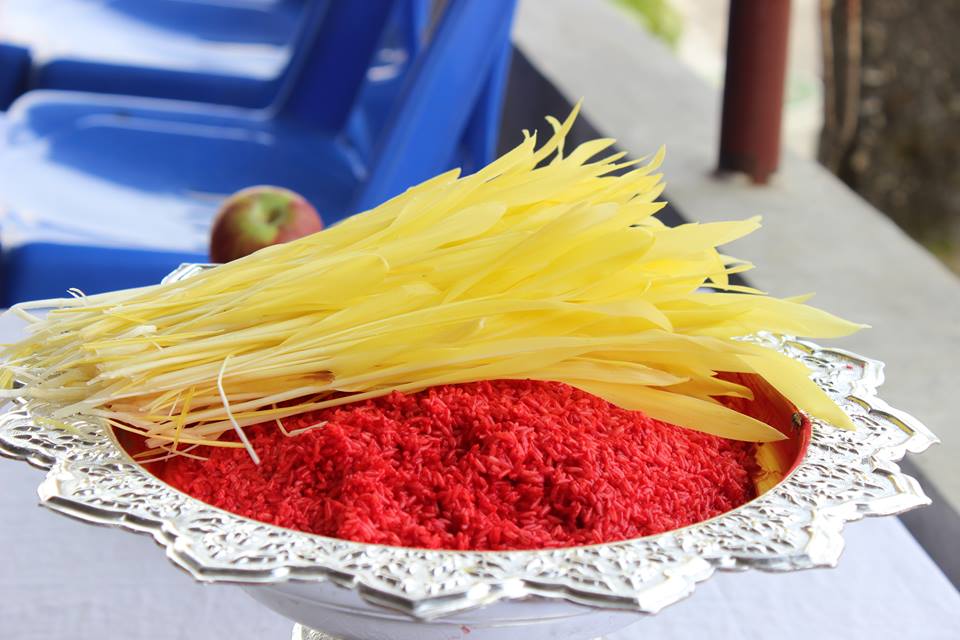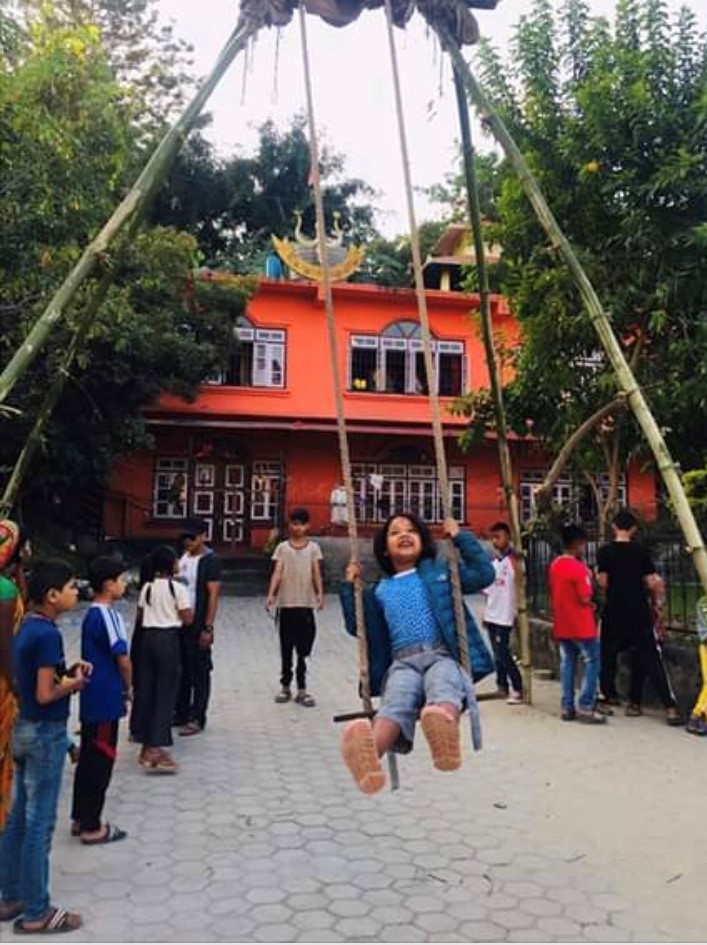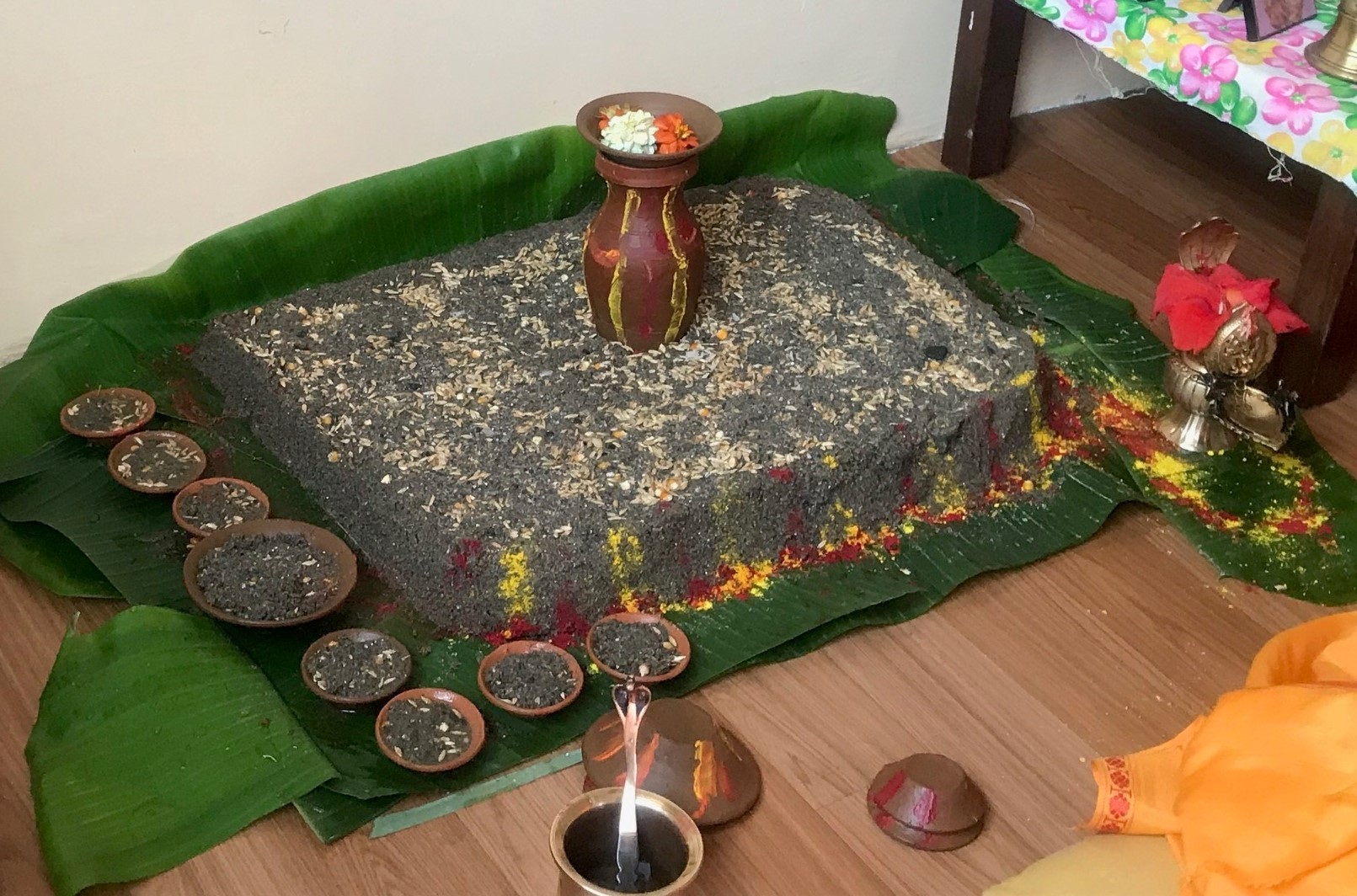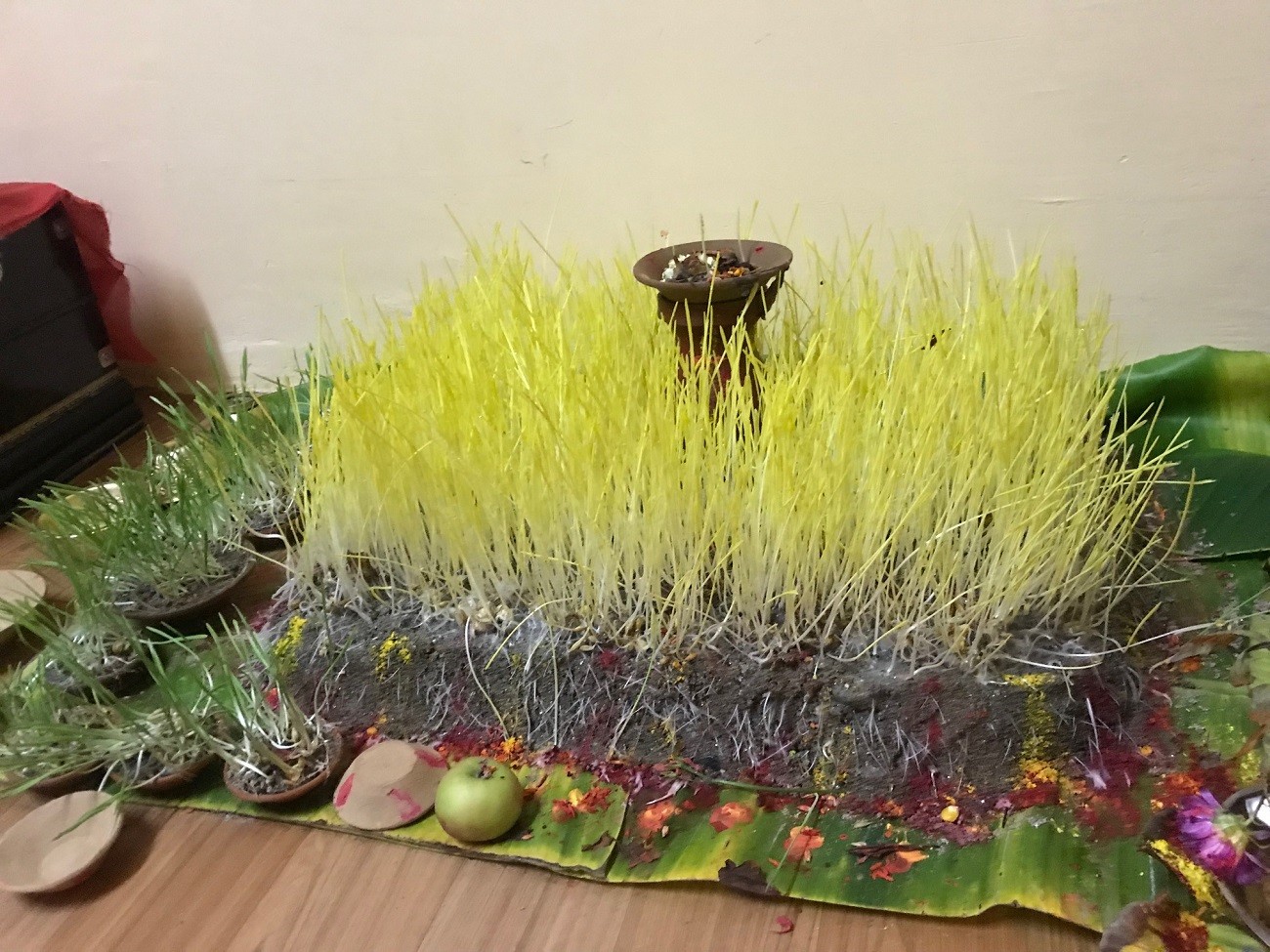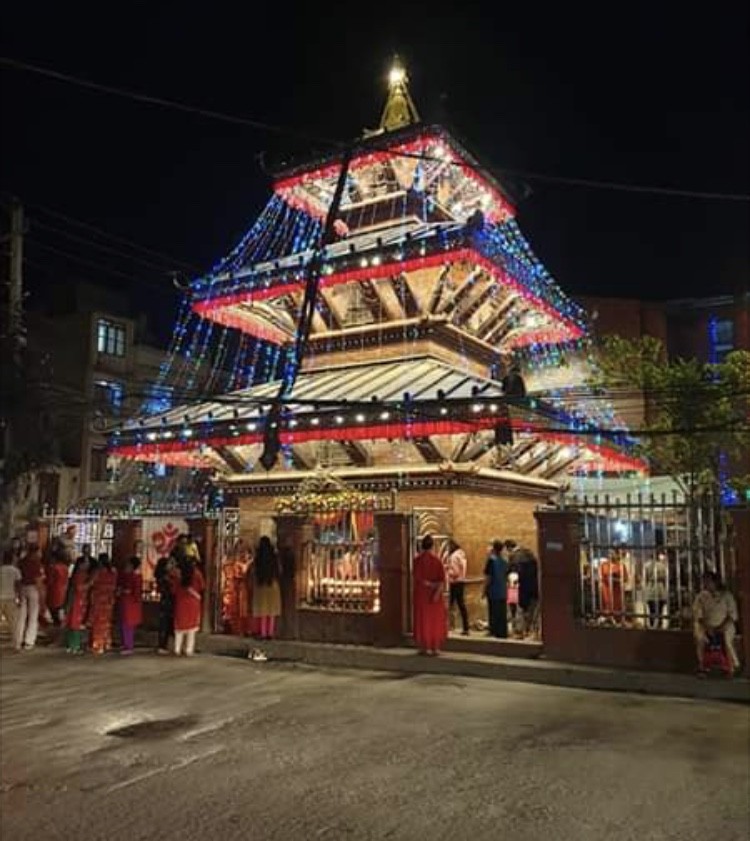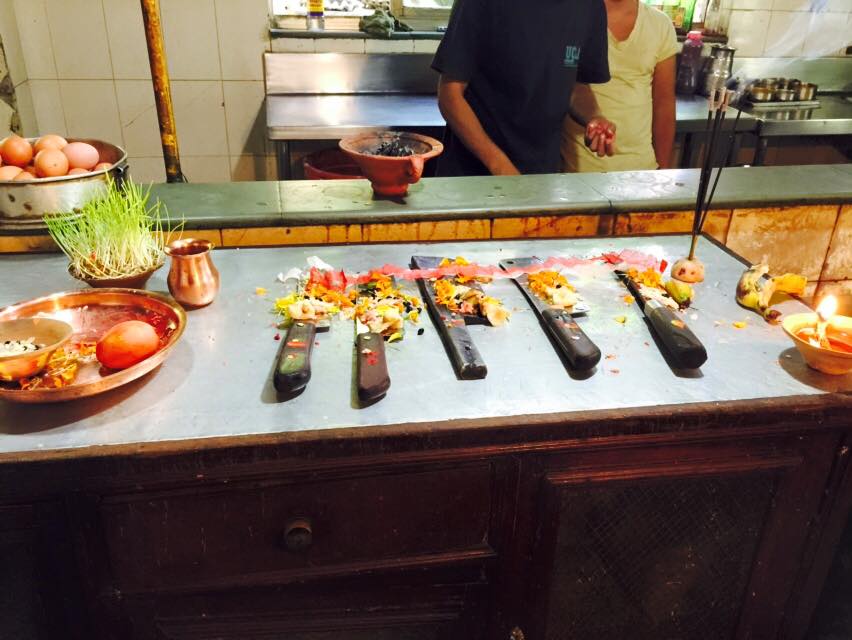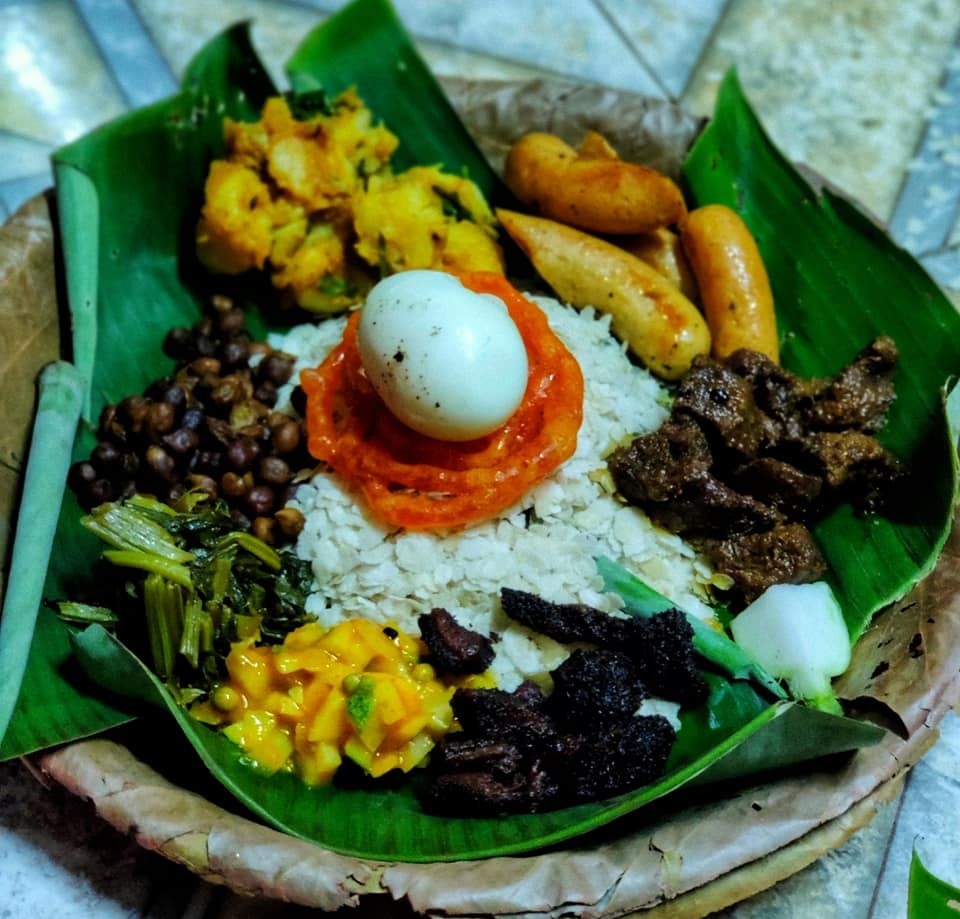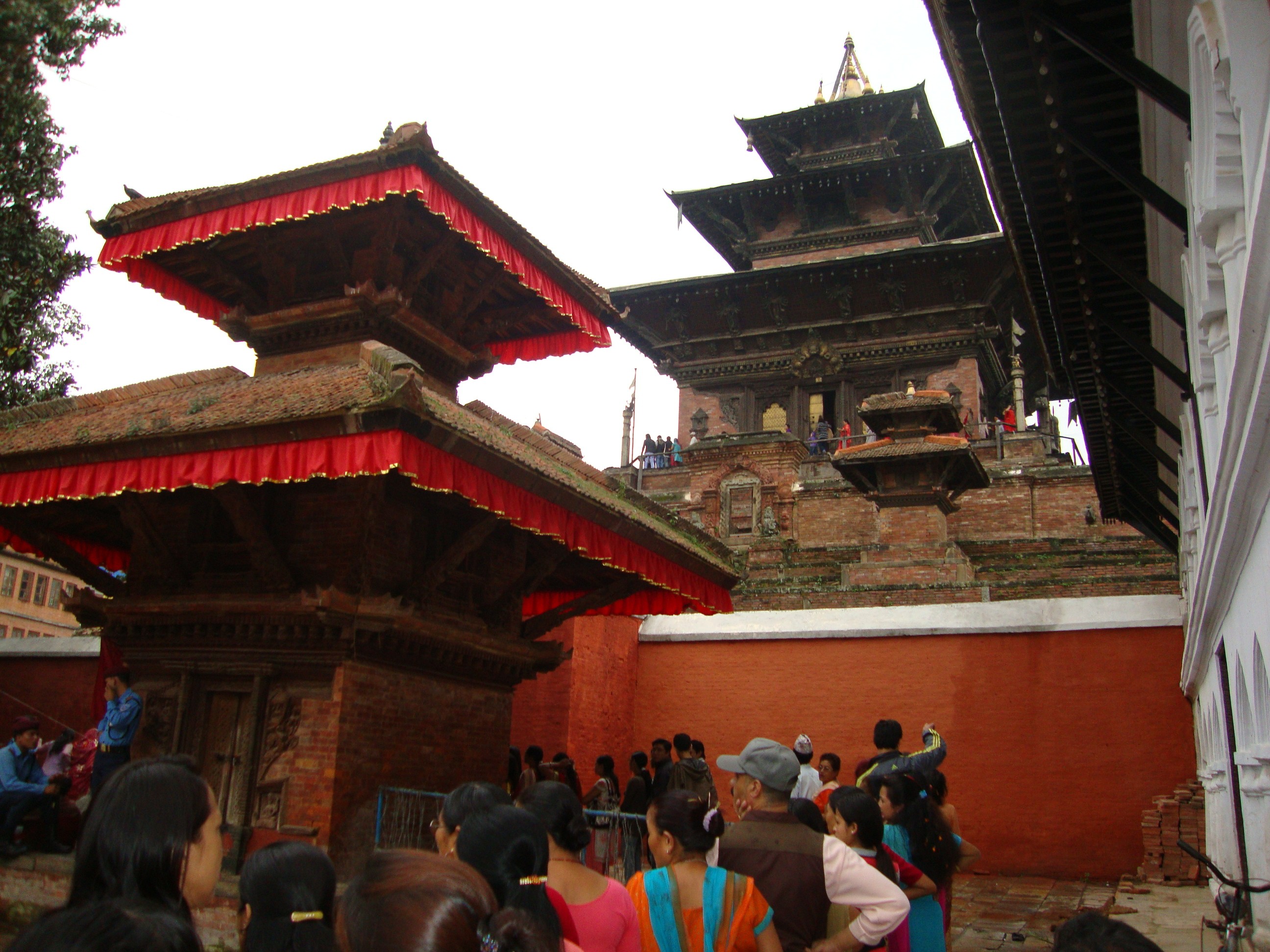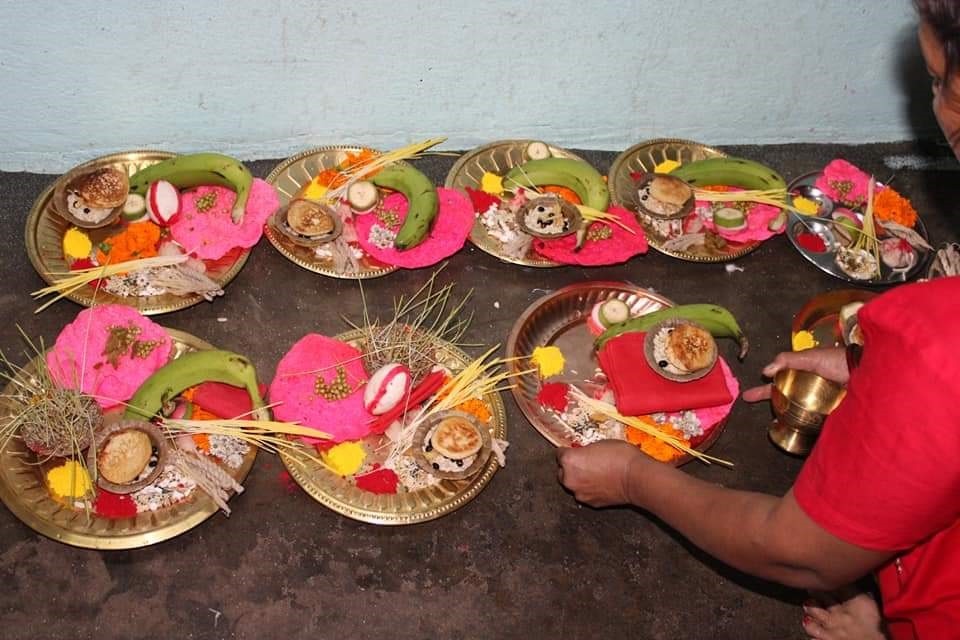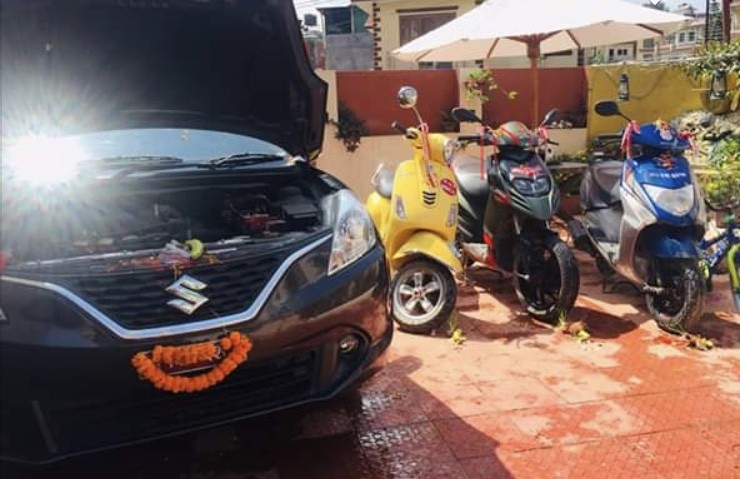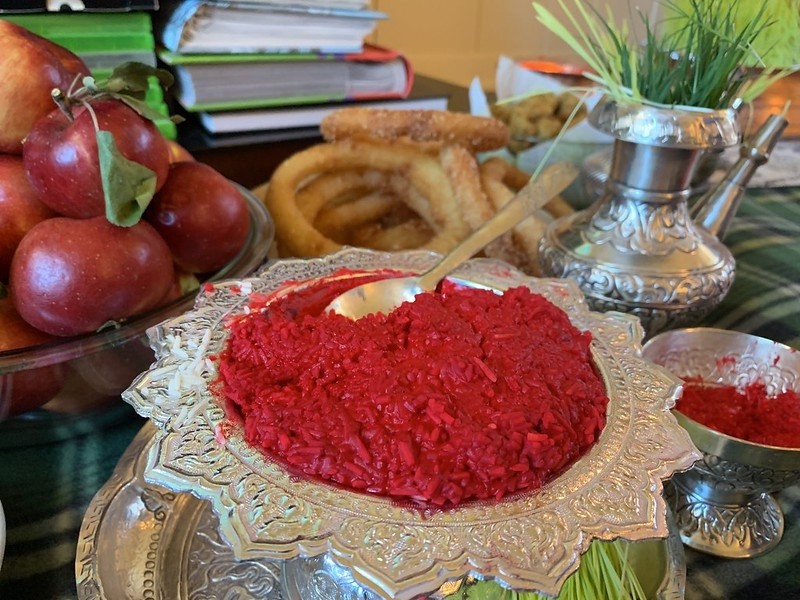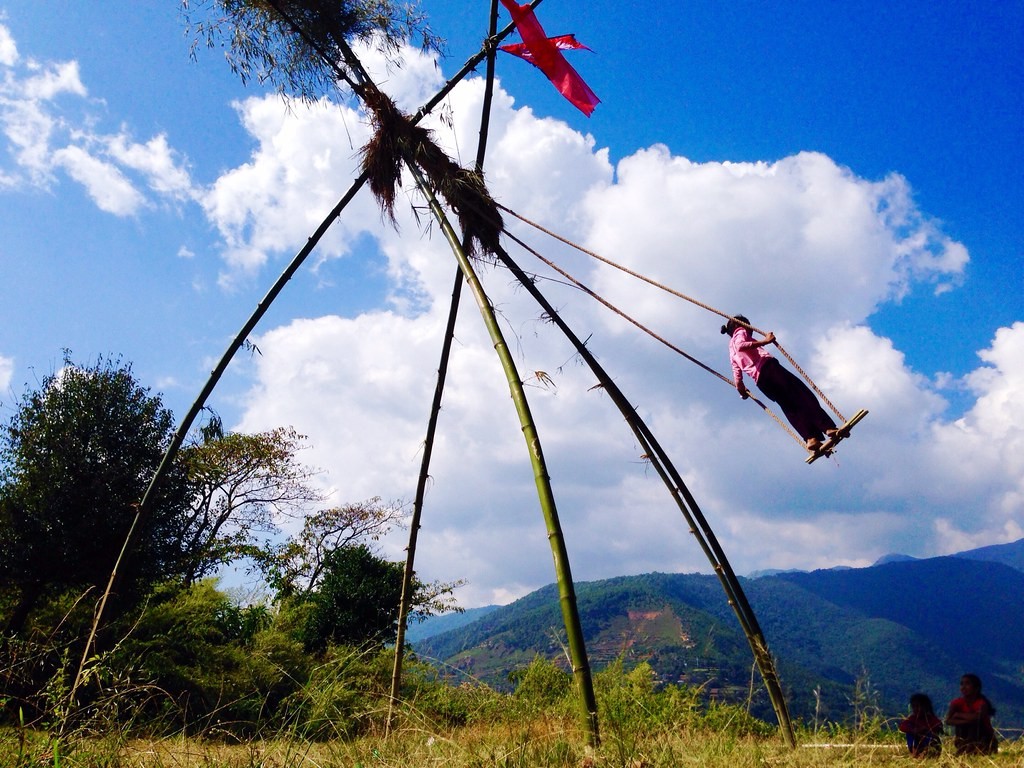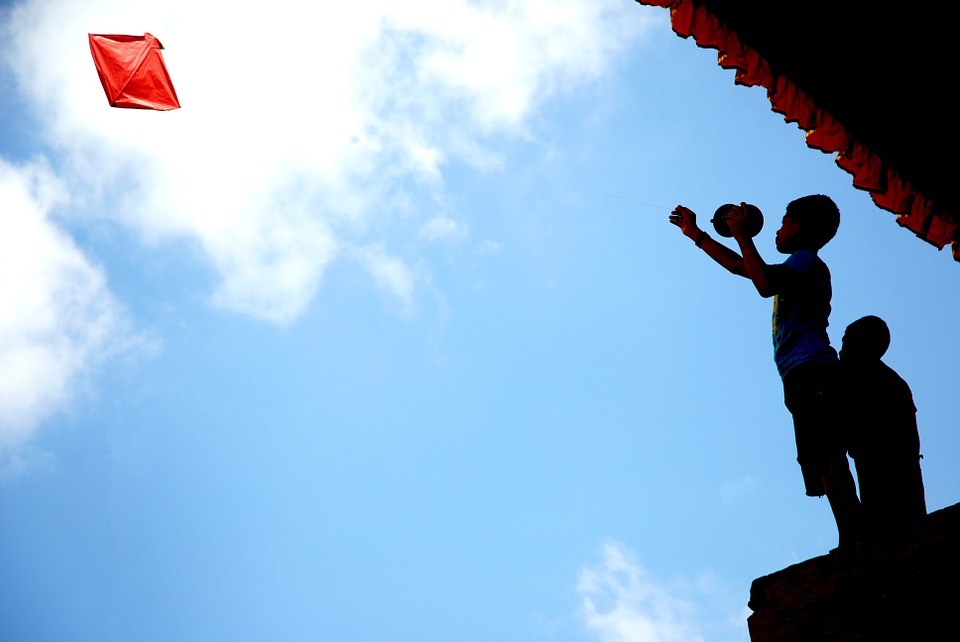Nepal’s grand yearly festival, Dashain falls during the post-monsoon period when the sky is vibrant and flawless, the air is freshest and the rice is all set for harvesting. Post-monsoon weather is not only suitable for trekking in the Himalayas but this is also the period to celebrate the biggest festivals in Nepal.
As the festival occurs after the end of lengthy rainfall, the farmlands and woodlands display verdant greenery; the sky opens itself up in its full splendor, the spectacular views of the Himalayan Mountains is merely awe-inspiring. If you are planning to visit Nepal during Dashain with family, solo or school groups then you will get opportunities to participate in grand and the most auspicious festival.
The biggest and the longest festival, Dashain is also known as Vijaya Dashami takes place at the end of September or the beginning of October of the solar year. The Newar community calls this festival Mohani whereas in general call it Dashain. In Nepal, this time of the year where the weather smells of festive aroma and the climate is calming with slight wind sunny days and clear blue sky. Vibrant kites soaring in clear sky, crowded markets and shopping streets blasting signature instrumental Dashain song “Mangal Shree Dhun” and people of all ages line up for their turn on the Ping (a traditional Nepali swing) signifies the advent of Dashain.
This festival is the celebration of the defeat of good above bad, of positive over negative, and of good quality over immorality. The Dashain festival continues for fifteen days and begins on the day of Ghatasthapana and concludes on the day of Kojagrat Purnima. In the first nine days of the festival, devotees worship Goddess Durga and her different manifestations.
This year Dashain festivals start from September 29 to October 13, 2019. The tenth day of Dashain – Vijaya Dashami, the tika day is on October 8, 2019.
Reasons behind celebrating Dashain
Different Dashains relate to nature
Most of the festivals are celebrated in honor of the deities on astrologically auspicious days. Numerous others are associated with the departed souls of ancestors. Still, others are performed to signify the start or end of the agricultural cycle of the land, others are just family festivities and community culture.
The festival of Nepal connects to nature, be it Dashain or Janai Purnima or Asadh Pandhra (15th of Nepali month Ashar). Back in days, when people used to worship nature, Dashain was observed four times annually according to the seasons — Sharadiya Dashain (Autumnal, neither summer nor winter), Hemantik (winter), Basantik (spring) and Grismiya (Rainy). Hemantik and Grismiya Dashain.
Among these Dashain, Sharadiya Dashain and Basantik Dashain are still prevalent in Nepal. Basantik Dashain is celebrated as Chaite Dashain or small Dashain which generally falls in the final month, Chaitra, of Bikram Sambat calendar.
Sharadiya Dashain became a grand Dashain observed today as Bada Dashain or Vijaya Dashami. As Sharadiya Dashain starts after the season of harvest. During this time, farmers have already seeded barley, paddy, and millet. So farmers have the leisure period to meet with relatives and friends and they are contented as most households are filled with rice and grains. In addition, the season is considered as Sarad Ritu since it is the utmost pleasant time in the year.
The great harvest festival of Nepal, Dashain is a time for family gatherings, receiving and giving gifts and blessings, and carry out the worship of goddess Durga. This is the main reason for celebrating Dashain in this season, and hence Dashain became popular.
Mythological version
Dashain celebrates the power of the female. One of the Hindu legends reveals that in Satya Yuga(Era of Truth) there was a huge battle between gods and demons. The gods could defeat the demons headed by Mahishasur. Then the Goddess Durga with 18 hands was created, through the light of all gods. It is believed that there was continuous war between Goddess Durga and Mahissasur in the first nine days of Dashain. On the tenth day, the Goddess won the battle and gained a triumph over evil. Vijaya means the victory and the Dashami means the tenth day, which made the name of the festival. Thus, Dashain signifies the victory of well-finished evil while also celebrating women’s power, by worshipping Goddess Durga.
Likewise, another Hindu legend Ramayana denotes Dashain as the day when Ram (vice) gained a triumph over the Ravan (virtue) with the blessing of goddess Durga. In Sanskrit, Dasain denotes taking away the ten sins. The ten heads of Ravana symbolize these ten sins and Rama destroys each one of them.
Whatever could be the legend, we can conclude that Dashain is observed to mark the victory of good over evil. The people believe that the festivity of Dashain will lead an individual towards the right path. Also, the goddess Durga will protect the members of the families forever. They also believe that it is good to receive the tika and blessings from as many people as you can.
Days of the festival
The rituals are believed to have begun from the deities and people in this legendary time praying and worshipping the mother goddess at night, gathering around her chariot. Alternately, Dashain denoted as ‘Navaratri’ and ‘Navaratha’. In the Sanskrit, ‘nava’ means nine, ‘ratri’ for a night and ‘ratha’ for the chariot. The definite period of the festival, observed for 15 days, beginning with Gatasthapana and ending on the Kojagrat Purnima (full moon day).
During nine days of Navaratri, devotees pray nine different manifestations of Goddess Durga, which every Goddess being worshipped on the dedicated day. The nine forms of the goddess are:
- Day 1: Shailaputri
- Day 2: Brahmcharini
- Day 3: Chandraghanta
- Day 4: Kushmunda
- Day 5: Skandmata
- Day 6: Katyayani
- Day 7: Kalratri
- Day 8: Mahagauri
- Day 9: Sidhidatri
The first, seventh, eighth, ninth, and tenth days of the Dashain considered as Ghatasthapana, Foolpati, Mahaastami, Mahanawami, and Bijaya Dashami respectively hold special significance.
Ghatasthapana
Ghatasthapana (sowing Jamara) manifests the commencement of Dashain or Navaratri. A special place is set up for Ghatasthapana, the ritual installation of a sacred water vessel (Kalash) in the center of a rectangular sand block seeded with grains. The goddess is believed to reside in the vessel during Dashain.
The room is darkened to get golden sprouts, generally called Jamara, from the seeds. The shoots, which represent a good harvest, will be beautifully put on the head of family members as blessings on the tenth day of the festival. In this auspicious day, the head of the family plants the jamara and worships the vessel. According to the ritual, the outsiders aren’t permitted to go in or see the place where it is planted.
As stated in Vedic rituals, sprouting of the auspicious “Jamara” is also started at Hanumandhoka Dashain Ghar. This room is used to plant barley and maize seeds called Jamara and to worship the Astha-Matrikas (the 8 Tantrik Goddesses) along with the Nava Durgas (the 9 Goddess Durga) for remaining 9 days.
Dashain Festival Days 2-6
From the 2nd day to the 6th Day of the festival is the preparation days for the approaching celebration from the 7th to the 15th days of the Dashain festival.
Throughout these durations, the prayer to Goddess Durga is performed. People are engaged in shopping to buy new clothes and gifts and purchase animals like goats for sacrifice. People visit shrines of goddess Durga Bhavani in the early morning. Whereas, people staying away from home return to their families with gifts.
Fulpati
The seventh day of Vijaya Dashami, Fulpati marks the commencement of official weeklong Dashain holidays in government and private offices and schools.
On this day nine kinds of fulpati (flowers and leaves of sacred plants) are brought into the worship room of the house. Fulpati comprises an assortment of a banana plant, pomegranate, rice stalk, turmeric, manabriksha, kachuki, belpatra, ashok, and jayanti adorned outside the house and later is carried into the house with the faith that bringing these nine elements into the house would bring the goddess related with those plants
Fulpati is also observed by an official ceremony in Tundikhel. During the day of Phulpati, five Magars bring a palanquin of flowers and sacred leaves from Gorkha on foot all the way up to Dhading district from where six Brahmins brought them to Kathmandu.
The parade is about three days long. The government officials wait for the arrival of the Phulpati in Tundikhel and join the parade to Hanuman Dhoka. The Nepalese army observes the continuous firing of the weapons for about fifteen minutes to celebrate the arrival of the Phulpati. Then a variety of sacred shrubs brought it to Nasalchowk to offer Goddess Taleju Bhavani: another popular name of Goddess Durga Bhawani.
But since 2008, after the Royal family was overthrown from the country, the tradition of the arrival of the Phulpati has changed. The Phulpati now goes to the residence of the President.
Interested to witness Dashain Festival?
Maha Ashtami
The 8th day of Dashain, Maha Asthami, is dedicated to Kali, the fiercest form of the goddess Durga. This day is the most significant day of the Dashain festival because it is said that Goddess Durga achieved power on this day.
Devotees visited several temples and shrines of the goddess in Valley and throughout the country from the early morning. People offer worship and sacrificing of different animals to the goddess at various shrines. After offering the blood of these animals, the meat is brought and cooked in homes of devotees as a “Prasad” (food blessed by the divine).
Additionally, it is offered in small leaf plates to all the household deities and then shared amongst all the family members. This food is regarded as blessed and auspicious. Devotees who do not sacrifice animals offer sacrifices of numerous vegetables and fruits instead of animals. Also on this day, a special ‘Kalaratri’ or dark night worship is taking place at midnight at the ‘Dashain Ghar’ of Hanumandhoka.
People worship and offer flowers, coconut, animal blood and vermilion to their tools, equipment, and vehicle. It is said that worshiping the vehicle and tools equipment prevents accidents and businesses thrive for an entire year. According to legend, Arjun, one of Pandav’s brothers, took his Ayudha (weapons) from the Shami tree after 14 years of exile from his country and did worship of the weapons on this day. Ayudha Puja or Astra Puja is the main ceremonial on Mahasthami day. On this particular day, people worship weapons, vehicles, and machinery parts.
The Newar Community perform the feast called Kuchhi Voya in which ritually people should consume two pathi of beaten rice including bhuttan, (fried intestine and other abdominal part), tori ko saag (mustard leaves), bara, (beancake), chowella, (marinated meat) aaloo ko achaar, (potato pickle) bhatmaas, (soybean) aduwa, (spiced ginger) bodi (blacked- eyes peas) in a banana leaf including Aila (liquor) and thoo (Newari alcohol).
Before initiating Kuchhi Voya, the main person of a household offers a feast to nine Goddesses distributing one each to nine Goddesses on a banana leaf cut into small pieces. During feast, family members sit in a row for the feast with the eldest taking the place of honor at the top and the youngest at the bottom.
Maha Navami
The ninth day of the festival; is called Maha Navami. Temple of the goddess is filled with devotees from dawn till dusk. Until this day, the ceremonies reach to the peak. The state offers the sacrifices of the buffaloes under gunfire salutes in Hanuman Dhoka Royal Palace. Special worship is done to Goddess Durga and ‘jamara’ (germinated seed) strewed on the first day of the festival is offered to the goddess at different temples and shrines.
Also, many people pay homage to Nawa Durga in the form of nine girls in the pre-puberty age. These young girls signify the goddesses who participated in Durga for war. Many have faith in that one can cleanse oneself by consuming water from the hands of these nine girls. The girls are served all kinds of fruits and delicacies, along with gifts.
The Taleju Temple situated at Hanumandhoka in the capital city is also opened on this day for prayers to worship. The queue of people lining up to worship in the Taleju Bhawani temple, which only opens once a year, is a memorable sight for the foreigner. On this day, people of the Newar community also worship to Bhimsen, a Hindu god.
The Newar community prepared Mohini tika (black tika) on this day. It is prepared by burning cotton wick rope continually, it’s kept enclosed with another earthen pot on which thick black soot formed. This black soot is applied on the forehead, just beneath the red tika on the 10th day of Dasain.
On this particular day, god Vishwa Karma, the God of creativity is also worshiped. All factories, vehicles, any machinery instrument and anything from which we make a living are worshipped.
Vijaya Dashami
Vijayadashami is celebrated on the tenth day of the Dashain festival. According to legend, Maa Durga defeated Mahisasur and Ravana (King of Lanka on the Hindu epic Ramayana) was killed by Rama (a prince of Ayodhya, an incarnation of Vishnu) on the tenth day of Dasain. So Vijaya Dashami symbolizes the triumph of good over evil.
On this auspicious day, elder members of the family applied red tika (a mixture of rice grains, curds, and vermillion powder) on the forehead of young ones. Along with it, the younger ones also receive jamara (barley sap-lings), a small sum of money called “Dakshina” and blessings from the elders.
The jamara is considered a token of Goddess Durga and the elders blessing as well. While the red tika is taken as a symbol of the blood that ties the family together forever. The relatives and the family members away from their home come to receive tika on the following days of the tenth day.
Kojagrata Puja
The fifteenth day of Dashain is the last day that falls on the full moon day called Kojagrata Purnima. The actual meaning of the Kojagrata is ‘who is awake’. On this day, people worship the goddess of wealth; goddess Laxmi. They believe that the goddess will descend down to the earth in this day and bless her with prosperity that is awake for the whole night. The people enjoy the night by playing cards and much more.
The Newar Buddhists believe that Swoyambhu appeared on this full moon day. So, they clean Chaityas and stupas and carried out worship to Buddha called Buddha Puja on this day.
Have any query about Dashain?
Dashain is actually the ceremony of worshipping, gathering with lavish food, and good clothing. Its a time for bonding and quality chatting and enjoying with families and relatives. People living far away from home or homeland, come back to their home and get together with their families. It’s a great festivity where people invite guests, organize a grand feast, visit their relatives’ houses, fly kites, build bamboo swings and engaged in various entertaining activities.
If you are here in Nepal during late September or in early October then you must participate and witness the Dashain festival. The important thing that should not be missed during your visit to Nepal during the Dashain festival is swinging on bamboo swings. Traditional Swings (Ping) are set up across the country during the festival. It is believed that we should at least leave the ground once during Dashain.
Even you can visit the local market especially Asan bazaar to witness the locals shopping for the festival. Likewise, visiting places like Kathmandu Durbar Square, Hanuman Dhoka and several temples as city tours provide an opportunity to observe the activities of people in the temples like how they perform the worship. One of the fascinating things that you can involve during your visit is participating in kite flying. You can see the various colored and sized kites in the sky over most parts of Nepal.
The kites are also considered as the messenger to the god for more rain. Numerous small fairs are conducted throughout the country with Ferris and wheels and other rides and entertainment. Even you have the opportunity to indulge in the taste of festive cuisine. You can listen to Dashain music all around the cities which are called “Mal Shree Dhun”. Most prominently, the Dashain procession that passes through the three cities of the Kathmandu Valley is something that will astonish the foreigners.
Dashain Procession and events
Panchali Bhairav
The Pachali Bhairav Jatra is a parade takes place on the fifth day of the fortnight in Kathmandu. It is celebrated to honor the god Pachali Bhairav whose idol is situated in the southern part of the historic section of the city. On the night earlier the main day, a “Kalash” or a sacred water gold-gilded copper Jar bearing the mask of Bhairav is carried to his shrine of Pachali Bhairav, People pay homage with prayers, rituals, and offerings of meat and Jaad and Raksi (Nepali local liquor). There is a custom of offering spirits and liquors to deities in Nepal in Newari culture in Nepal. A priest escorted by a musical procession brings an idol of Shiva’s Son “Ganesh late in the night to the temple. The “Kalash” is then taken out from the shrine and carried on the shoulders of devotees to Durbar Square. In Durbar Square, goats and buffaloes are sacrificed to the performers clad up as Bhairav, Kumari and other deities. During the event, various dances of Bhairav are also executed.
Shikali Jatra
The Shikali Jatra is a sacred masked dance festival which is believed as part of the celebrations of Mohani. It is celebrated on the seventh day of the fortnight by the ethnic Newar community residing in Khokana, a medieval Newari heritage village in the southern part of Kathmandu valley. The festival involves dance performances and religious rituals and lasts for five days. The dancers signify 14 deities of the Hindu pantheon. A wooden chariot with the statue of Goddess Rudrayani is carried through the village streets, finally resting in front of the Shikali Temple situated on a verdant hill just outside the village.
Nava Durga Dance
The masked dance of Nava Durga is performed in Bhaktapur and nearby localities. Nava Durga is a group of nine goddesses who are said to protect the city from outside harm. Nine shrines devoted to the deities mark the city’s perimeter.
Asta Matrika (eight mother goddess)
At a courtyard inside the old royal palace at Patan, masked dancers signifying Asta Matrika reenact the victory of Goddess Durga over the demon Mahisasur. The performances were originated in the 17th century. The Asta Matrika dance is also carried out to eradicate obstacles in the city caused by bad spirits. It is thought that worshipping the eight goddesses bring good to the country and the people.
Goddess Manakamana procession
On the ninth day of the fortnight, a festive procession of Goddess Manakamana is held in Bungamati, 9 km south of Kathmandu. A dance highlighting a masked man riding a hobby horse is also presented, among other performances.
Asanbhalu Dyah Jatra
Asanbhalu Dyah Jatra, also called Annapurna Jatra, is celebrated on the 11th day of the fortnight. An idol of the goddess Asanbhalu Ajima, the patron goddess of Asan, Kathmandu, is sited on a palanquin and carried around town escorted by musical bands. Also, the Asan Paya sword parade takes place on this day, with the youngest member of the community leading the parade. The day is the final day of Mohani for the locals of Asan and is known as Asan Chalan.
Kumha Pyakhan
The sacred Kumha Pyakhan dance used to be done at Durbar Square and Asan as representative protection of the idol of the deity Taleju when it is brought out of her temple during Mohani.

